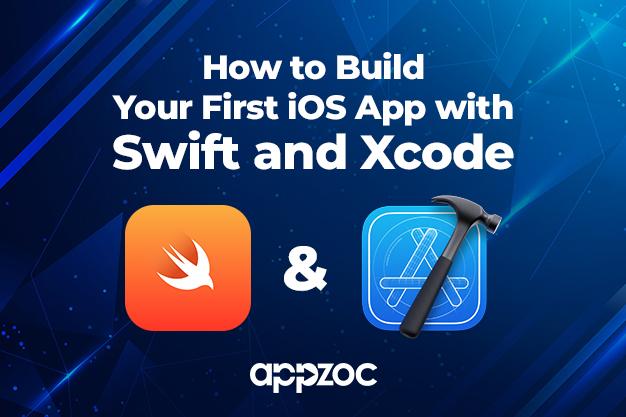
Flutter
Make the most of this cutting-edge technology by developing apps quickly! Our Flutter solutions have amazing features that can be used to create sleek, high-performance apps that can scale seamlessly across platforms.

With a huge number of iPhone app developers Kerala, building iOS apps offers huge potential to reach customers. Apple provides powerful tools like Swift and Xcode to develop great iOS apps for iPhone and iPad. Here is a step-by-step guide to building your first iOS app.
Appzoc has focused on advanced programming methodologies and design principles. We have been on an easy track and made it more approachable for everyone from scratch.
First, ensure your Mac meets Apple’s requirements for the Best mobile application development Kerala. You’ll need an Intel-based Mac running macOS 10.14 or later. You’ll also need Xcode, Apple’s integrated development environment (IDE) which is available for free on the App Store. Xcode includes Swift support plus iOS simulators so you can test your app during development. Finally, enroll in the Apple Developer Program ($99 per year) to enable app distribution.
Every great app starts with an idea. Decide what your app will do and how users will interact with it. Will it be a game, utility app, or something else? Sketch some screens and workflow. Consider features and functionality. Read App Store guidelines and review competition to ensure your idea is viable. Identify the main tasks involved so you can schedule the work.
Swift is a powerful, beginner-friendly programming language used to write iOS apps. Download Apple’s Swift training materials to learn key concepts like variables, data types, functions, classes, arrays, dictionaries, loops, and conditional statements. Absorb the materials, referencing Apple’s books and guides. Experiment in Swift playgrounds within Xcode to grasp the syntax. Solid Swift skills will enable you to code your app’s backend logic.
Great apps have intuitive interfaces that look fantastic. Within Xcode, you can build screen interfaces by dragging and arranging interface elements visually. Learn about common controls like buttons, switches, and text fields. Study Apple’s Human Interface Guidelines for principles of effective app design. Sketch wireframes and mockups of your own interfaces. As you code, leverage built-in controls, libraries, and Auto Layout tools to implement your designs
A key concept in iOS development is Outlets and Actions, which connect your user interface elements to code. Outlets let you reference UI elements in code to access their properties and values. Actions let you trigger code when users interact with elements. Learn how to leverage @IBOutlet and @IBAction to wire up buttons, text fields, and other elements to create dynamic app behaviours.
Apps require various assets and resources like images, fonts, lists, string files, and more. Xcode helps you manage these items so you can easily access them during development. Learn best practices for naming, organizing, and linking to resources from code or interface builder. Read the Asset Catalog guide to understand how it consolidates items your app needs. Managing assets well will improve development efficiency.
With your UI design, you can focus on the code powering your app’s functionality using Swift structures, classes, functions, callbacks, and algorithms. Logic might include fetching or saving data, running calculations or visual effects, integrating SDKs like payments or ads, spawning system tasks like email, or connecting to web services via API. Think through requirements and architecture before diving into code.
Many apps need to make network requests to leverage web-based APIs and services. iOS offers frameworks like URLSession for executing HTTP requests. Learn how to make GET, POST, and other call types, handle responses and errors gracefully, parse JSON or XML data, and apply security best practices around SSL, certificates, and credentials. Test with mock endpoints during development.
In addition to remote data, apps often need local persistence for a smoother experience. Study local storage options like UserDefaults for app preferences, FileManager for files and folders, Core Data for object graphs, and SQLite for relational data. Choose solutions fit for your app and data model. Combine local caching with network calls to optimize performance, resiliency, and offline use.
With core functionality coded, shift focus to polish and perfection. Refine the UI with transitions and animations using UIKit Dynamics and Core Animation. Implement localization for international users. Ensure accessibility with proper text sizes, colour contrast, and VoiceOver support. Optimize for all supported iOS versions and devices using size classes and traits. Fix bugs from testing. Leverage Instruments to check for leaks, CPU usage, and memory.
Testing is crucial for catching issues before launch. Xcode offers powerful tools like the debugger, logs, and breakpoints to isolate and fix bugs. Learn keyboard shortcuts for quick testing cycles. Run UI tests to validate workflows. For logic, write unit tests using the XCTest framework. Adopt Test Driven Development to drive requirements from tests. Share builds with peers for feedback. Address crashes promptly by investigating stack traces and reading crash logs.
Once thoroughly tested, submit your app for Apple review and release on the App Store. Monitor user feedback and reviews to guide ongoing improvements. Work in rapid iterations using agile methodology to add features, fix issues, and publish updates. Evaluate success metrics like downloads, revenue, retention, and user sentiment. With each version, build on your past work to evolve the app and gain users. Congratulations, you have now released your first iOS app!
By leveraging Xcode, Swift, and Apple’s tools, you can bring your app idea to life. Follow these steps to design, code, test, and launch your first iOS app. Although there is a severe learning curve, it is very rewarding. With passion and persistence, you can build an app loved by users worldwide.